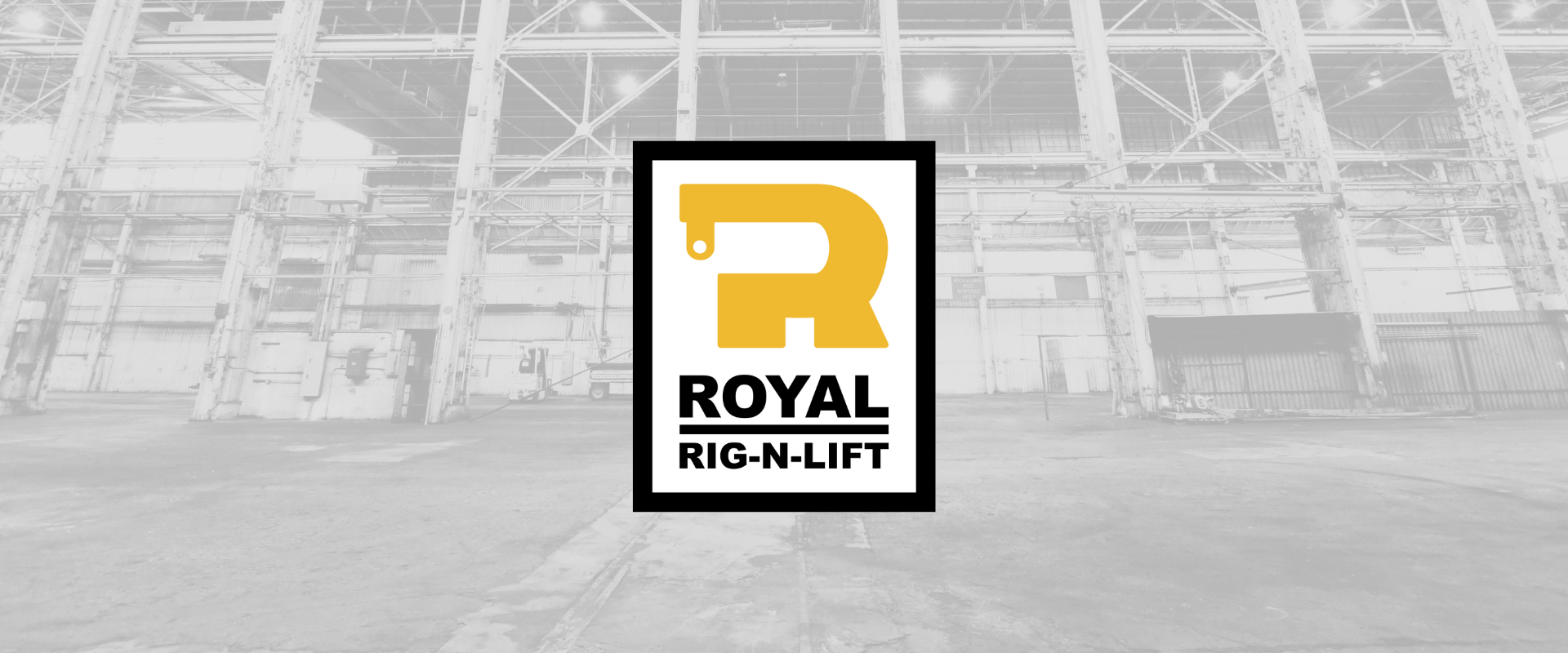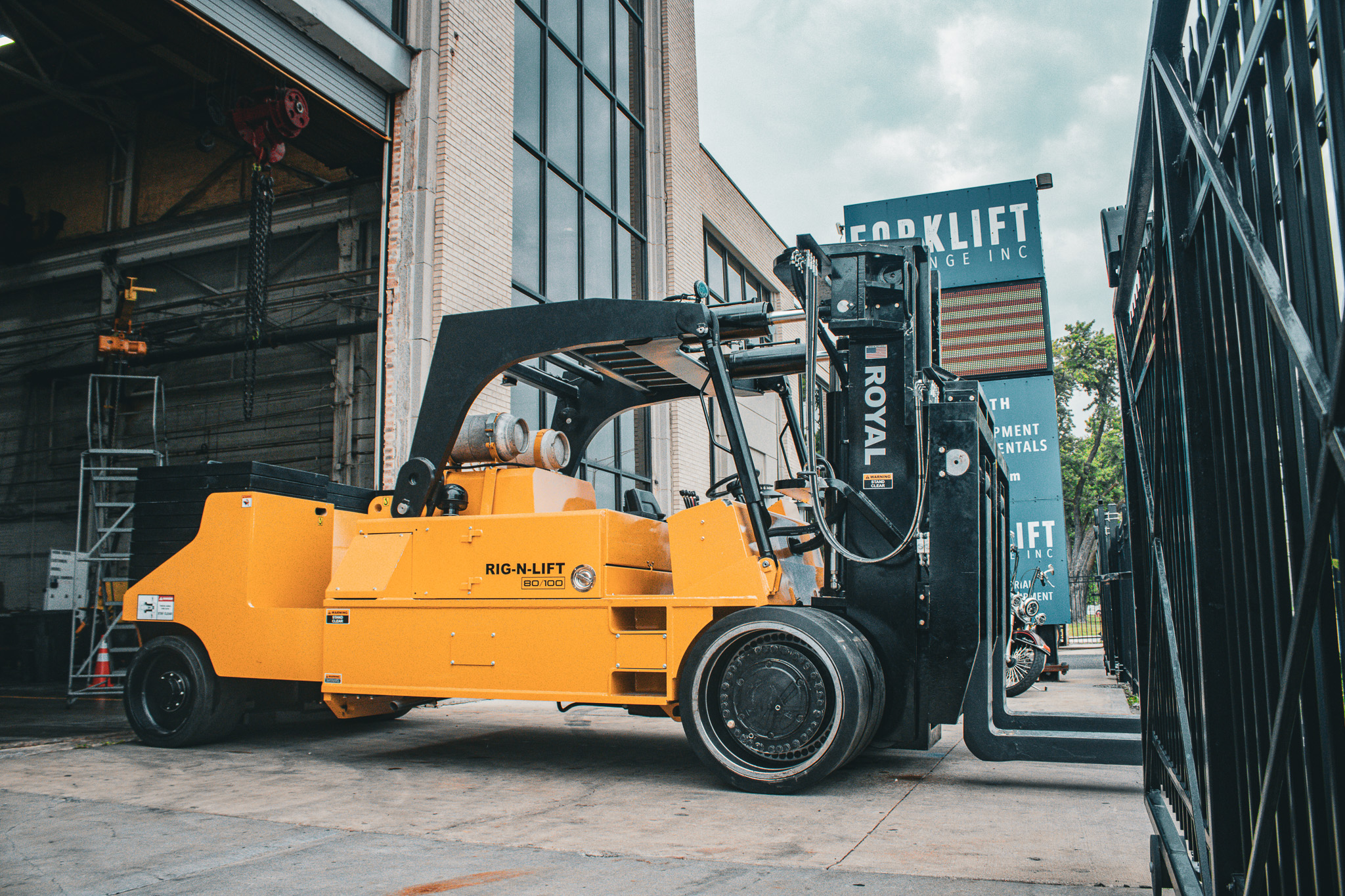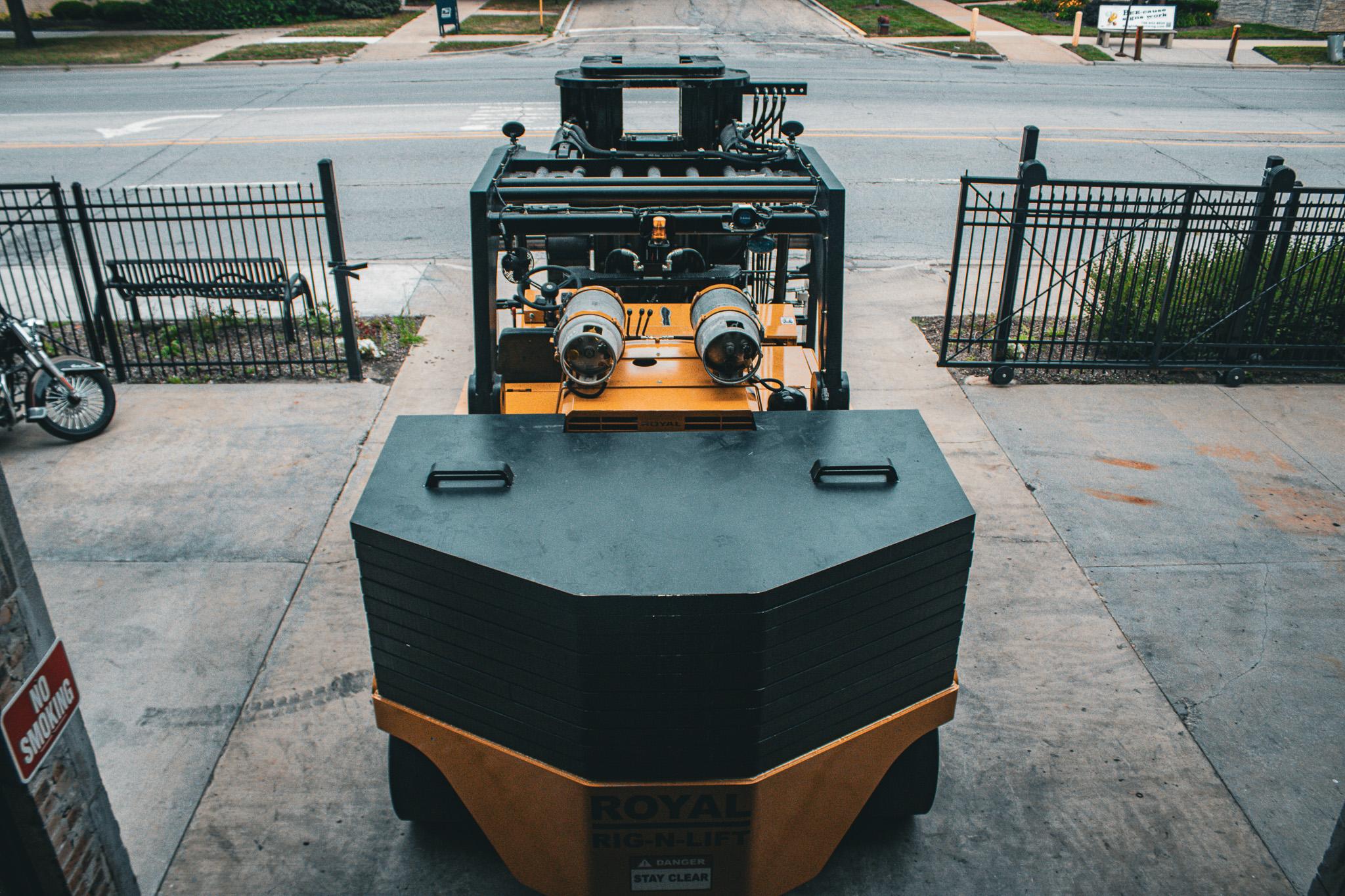



With an American manufacturing legacy that spans over a century, Royal RIG-N-LIFT has a storied history of entrepreneurship, innovation, and unrivaled expertise. Particularly in the high-capacity forklift industry, Royal’s legacy and quality of craftsmanship can best be displayed by the durability of its products, many of which are still active in the field after years of hard work and long hours.
Royal RIG-N-LIFT is continuing to build high-quality machines. Combining our original design for the extendable counterweight forklift with innovative electronics, the Royal RIG-N-LIFT line is the premium choice for machinery movers and riggers. Paired with nationwide service, parts, and customer support, our team is equipped with the people and tools to keep your operation on the move.

Royal RIG-N-LIFT strives to meet the ever-changing needs of the machinery moving and rigging industry through continuous innovation, reliable support, and the development of safe, high-quality machinery to continue the long-standing tradition of the Royal brand.
We aim to constantly evolve our business to best serve our customers amidst the dynamic nature of the material handling industry. By investing in our team, facilities, and product engineering, we are dedicated to finding the ultimate equipment solution for you, no matter the requirements.
We believe in building trust through precision, integrity, and collaboration. By prioritizing safety, reliability, and customer-focused innovation, we strive to develop solutions that elevate the standards of the machinery moving industry.

Royal RIG-N-LIFT has a long history of producing industry-leading heavy duty forklifts, albeit manufactured under different company names.
In fact, Royal’s origin dates back over a century to 1919 when it was first founded by Lester M. Sears under the company name, Towmotor Corporation, and the industry quickly adopted their prototype gasoline powered industrial tractor.
Towmotor transformed the material handling industry when they unveiled their forklift truck in 1933.
With a uniquely streamlined and compact design, a tight turning radius, and the now industry-standard forward-facing forks on hydraulic lifts, these trucks earned the moniker "one-man gangs".
Towmotor’s “one-man gang” nickname demonstrated their immense versatility. These machines were known to replace the work of thirty men, causing high demand as an essential cost-saving machine. Particularly when finances were tight during the Great Depression, Towmotor saw its sales double, and saw their order volume continue to increase throughout the late 1930s to the extent that all forklifts were referred to as “towmotors”.
Throughout the 50s and 60s, Towmotor expanded its product offering to include various fuel types, models, and increased their maximum load capacity to 65,000 lbs in 1965. That same year, Towmotor was acquired by Caterpillar Tractor Company of Peoria, Illinois and things suddenly took a shift from the stablized business which the Sears family created.
Known by many as “Caterpillarization”, Towmotor’s operations were relocated to a brand new facility and were fully rebranded as Cat Lift Trucks by the early 1970s.
Lee Hardwick founded Royal Tractor Corp in 1970, guided by a philosophy of emphasizing the production of a complete prime product. The focus was to produce machines with a high degree of design and production flexibility to meet every customer's special application requirements, meaning most Royal Tractors weren't a “standardized" design. Rather they hand-crafted and designed every spec based on its own circumstances.
With the brand change to "Cat Lift Trucks", the Towmotor product started to slip in notoriety within the liftruck industry, ultimately leading Royal Tractor Company and Lee Hardwick to the acquire Cat's heavy duty forklift division in 1984, which held the original Towmotor Corporation product lineup.
Royal Tractor inherited Towmotor Caterpillar's licenses to manufacture a variety of models, along with Towmotor’s rich history as one of the first forklift manufacturers ever. After unveiling a plethora of both cushion and pneumatic tire forklifts over the years, Royal Tractor eventually set it’s sights on pushing the envelope for the high-capacity forklift market by designing a first-of-its-kind product, the extendable counterweight forklift. Known both then and today as a “Rig-N-Lift”, this revolutionary design featured an extendable frame which allowed the counterweight to extend or retract from the main chassis, which altered the length of the wheelbase to increase the machine’s lifting capacity when expanded.
Quickly finding popularity among machinery movers and riggers, the larger displacement, higher horsepower, and torque rated engines provided power and improved gradability unequaled by competitive equipment.
Building a product lineup including cushion tire, pneumatic tire, extendable counterweight, and electric forklifts, Lee Hardwick turned Royal into an industry staple known for their high-quality and incredible durability.
After many years in the business, Lee Hardwick and his family decided to exit the manufacturing space and sold to Nordco Inc., a large producer of railroad maintenance equipment.
The Flaska family has acquired the rights to Royal Tractor Company to provide parts and equipment support to both current and previous Royal customers. We can offer service for your Royal regardless of its age.
From Lester M. Sears founding Towmotor over a century ago, to Lee Hardwick developing the first-ever extendable counterweight forklift, the Flaskas now aim to continue Royal's historied manufacturing legacy.